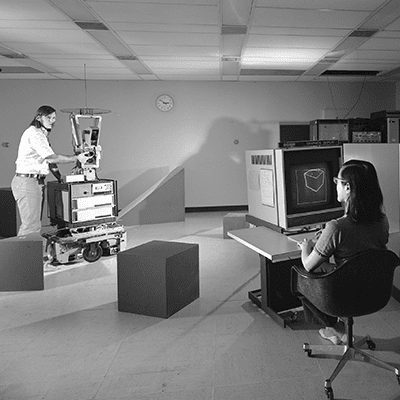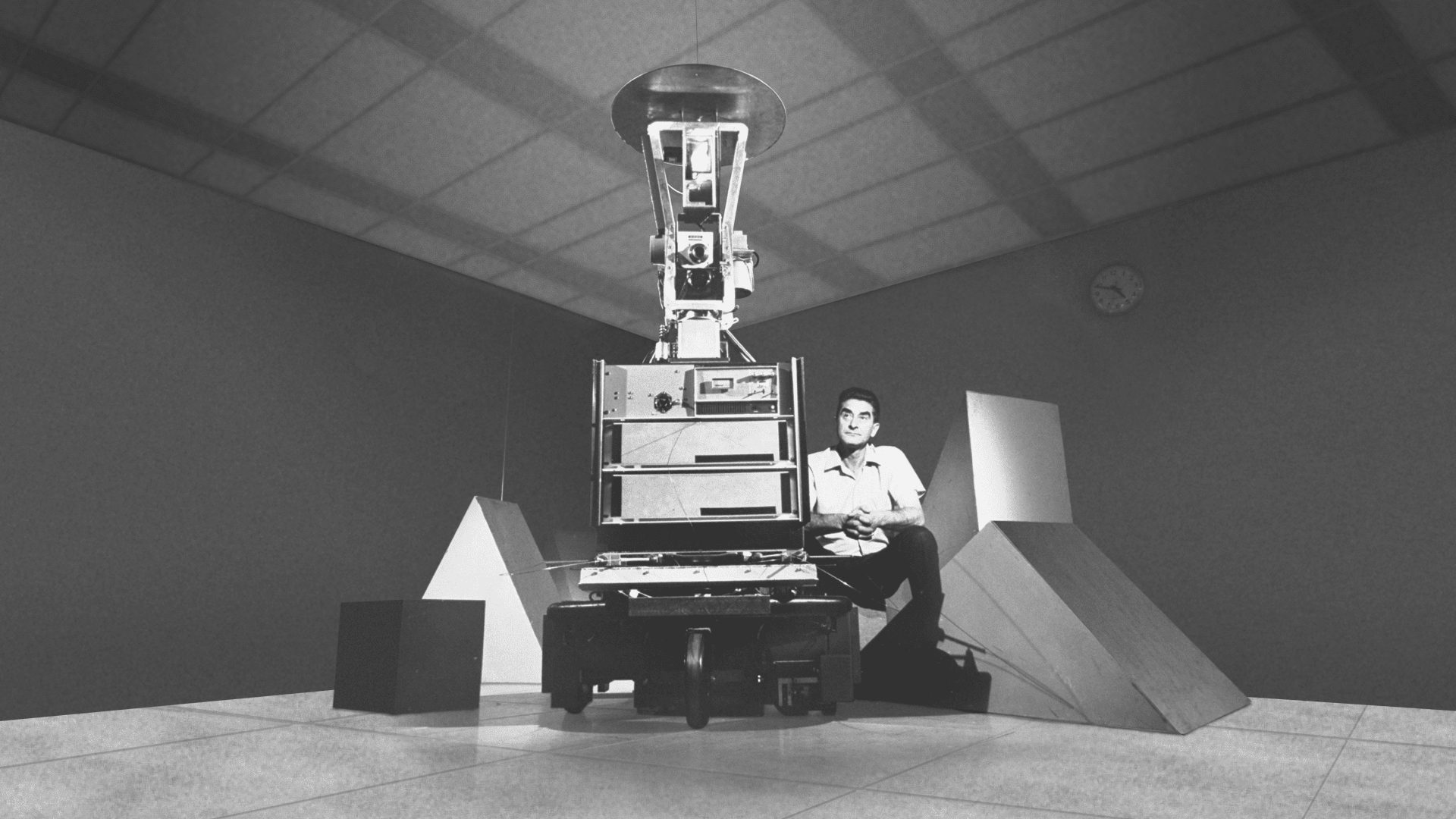How a giant box on wheels sparked the robotic revolution
THE CHALLENGE
Until the 1960s, the idea of robots was largely shaped by Hollywood’s wild imagination. Think Astro Boy, but with the advancements in computers and technologies. Charles Rosen, a pioneering researcher of artificial intelligence (AI) at SRI International, and his team, brought that imagination to life and set out to push the limits on what robots could achieve.
THE SOLUTION
Meet Shakey, the world’s first autonomous robot to move around, make human-like decisions on the fly and take action. Created by researchers at SRI, Shakey earned legendary status for its combination of robotics and AI in one system. It also teased the powerful potential of robots. You can thank Shakey for inspiring countless technologies such as, cell phones, global positioning systems (GPS), Roomba and self-driving vehicles.

Named lovingly for its trembly movements, Shakey was developed at SRI International between 1966 and 1972 and became famous for being the first AI-based mobile robot to accomplish a task without the need for step-by-step instructions.
A giant box set on wheels, Shakey is equipped with a TV camera, an antenna radio link, detectors and bumpers to visually interpret its environment and figure out how to complete a task given by a user. This is done by locating items, navigating around them and reasoning about its actions to complete the task.
Perhaps Rosen and his team’s greatest accomplishments with Shakey were their groundbreaking work in the areas of AI techniques, programming, computer vision, natural language interactions and the novel approach to layering architecture in robots — all algorithms that have inspired and are used in modern technology today.

After forging a new frontier in AI and robotics, Shakey was retired from duty and now calls the Computer History Museum in Mountain View, California, home. Shakey was also deservedly inducted into Carnegie Mellon University’s Robot Hall of Fame in 2004 and has been honored with a prestigious IEEE Milestone in Electrical Engineering and Computing.



